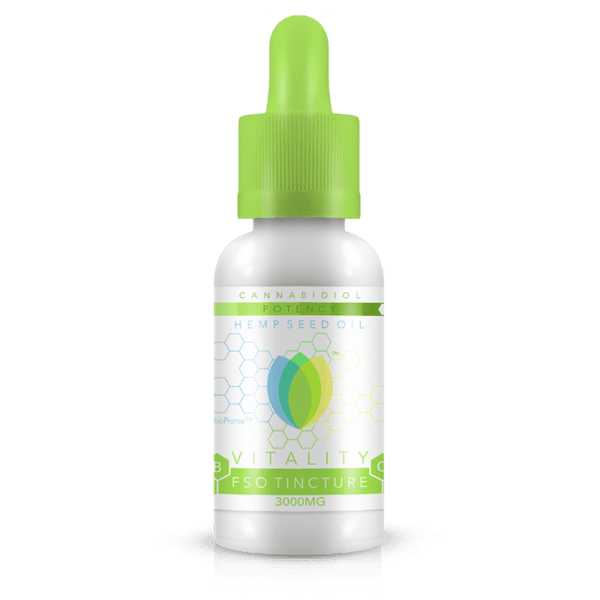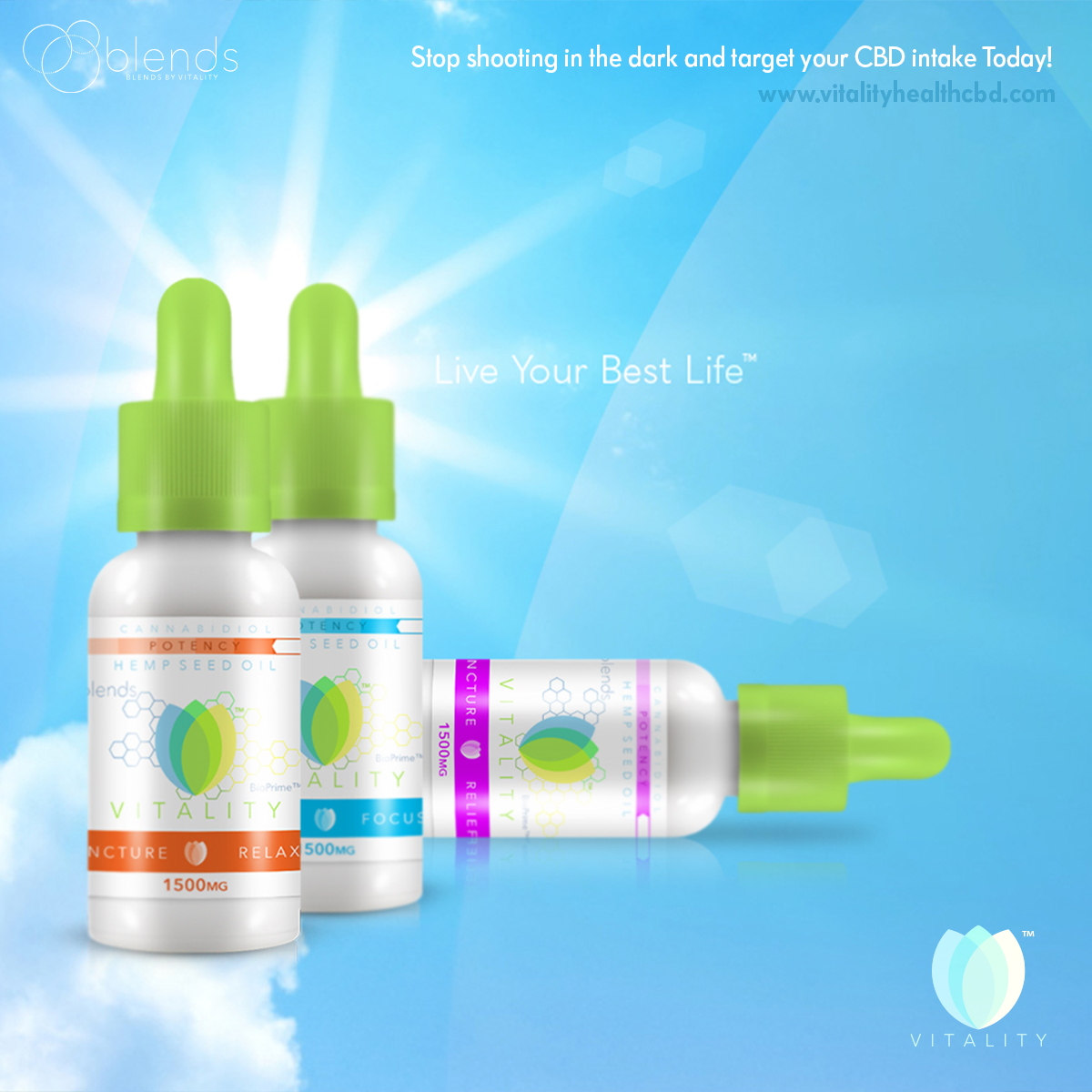Technically, a tincture is when an extract from animal or plant material is dissolved into ethanol is the solvent. Nowadays, though, the ethanol-doused tinctures are seldom seen (and legally questionable, if we’re being honest).
Instead, CBD-rich hemp extracts are more commonly dissolved into coconut, MCT, or other heart-healthy fat oil as a base. Even though the definition for tincture means it was dissolved into alcohol, the alcohol-free formulas (like ours) are often called CBD tinctures anyway.
Today, we’re going to look into everything you might want to know about CBD tinctures, including what CBD is, how to use a CBD tincture, the advantages and potential drawbacks of using this method, and much more. If you’ve been considering taking a serving of CBD oil as part of your daily routine, this guide may answer the questions that have been keeping you held back. Let’s dive into our full guide on CBD tinctures: everything you need to know.
What is CBD?
We’ve explained it more in-depth in previous guides, but if you’re unfamiliar, CBD is the most abundant non-psychoactive cannabinoid found in the hemp plant. Legally derived from industrial hemp that must contain 0.3% THC or less, CBD products are a safe way to experience the euphoric and beneficial properties that can come with cannabidiol without the mind-altering effects that follow THC.
There is more research needed on the subject, and we’re excited to see more researchers dive into the field every day for the findings that finally give us answers. In the meantime, we’ve observed that CBD may have analgesic, anxiety-reducing, anti-seizure, anti-inflammatory, and/or pain-reducing properties.
What is CBD Good for?
As we mentioned, there is more research needed before we have any solid facts, so we don’t pretend to make any medical claims on our platform. We do look at the clinical trials and published studies we do have on the subject, including numerous studies on CBD providing pain relief, containing anti-inflammatory and analgesic properties, and more. These properties may be what makes CBD useful for providing relief for chronic conditions like arthritis and acute pain, like pulling a muscle.
In addition to potential types of pain relief, it may help those that are plagued with social anxiety disorder, as well as generalized anxiety disorder and some related conditions. Even symptoms of obsessive compulsive disorder, or OCD, may potentially find some alleviation thanks to CBD, as evidence suggests.
The scorecard for CBD’s clinical research on conditions like insomnia appear to be more mixed, however. Some studies suggest CBD can increase wakefulness, while others insist that it can stimulate better sleep cycles. One study, in particular, helped to clear this up, concluding that it depends on the time of day you take CBD to determine the wakeful or sleep-inducing effects it may or may not have on you.
The ways one might be able to take advantage of CBD are virtually unlimited. People appear to find new uses for the many different types of products available every day, discovering ways that make the products more absorbable, more effective, more cost-efficient, or a combination of all three.
What is a CBD Tincture?
Even though herbal tinctures used to be made with a mixture of alcohol, the all-natural, health-conscious community that makes up many CBD users don’t prefer the alcohol-based concoction. People take CBD because of its non-psychoactive properties; having it dissolved into an alcohol-based solution defeats the point of preventing intoxication.
Nowadays, a tincture is made with oil, glycerin, or even vinegar as the solvent instead of alcohol. They offer the benefits of the tincture being alcohol-free, though they may not carry the same potency that an alcohol-based tincture might.
How are CBD Tinctures Made and Why Would I Use Them?
We’ll touch more on how CBD oil is made in more detail in another, separate guide, but the original tinctures were made from hemp strains rich in CBD using 60 to 70% alcohol. Tinctures like that may be made at home, but noteworthy CBD brands typically use better, all-natural alternatives.
More accurately known as just CBD oil, CBD tinctures are a convenient way to take CBD and have an incredibly long shelf life. Even using ingredients like coconut oil as the base instead of ethanol, the shelf life for a CBD tincture is often at least 18 months before the cannabinoids and other compounds start to break down and the product gradually loses it potency.
People use CBD tinctures because they’re a fast way to get a serving of cannabidiol into your system, with some of it potentially going into the bloodstream quicker than the rest. There’s still a lot of research to be done on the subject, but sublingual dosing seems to be one of the best ways to take CBD.
What is Sublingual Dosing?
When CBD oil, or any substance, is placed as drops under the tongue, this is known as sublingual dosing. When products are administered sublingually, peak blood levels of those products can be achieved often within about 10 to 15 minutes. It’s the most efficient way to ensure you’re absorbing as much CBD as possible, which is why almost every CBD brand that offers CBD oil will recommend this method.
When you consume full-spectrum CBD oil through ingestion straight into the stomach, you are likely to not absorb as much of that cannabinoid per serving as you could by applying the same amount under your tongue. Many people who use this method often note feeling the peak of CBD oil’s benefits much faster than swallowing it, where it can take over an hour to over three hours for the same results.
How Do I Use a CBD Tincture?
Once you find what your preferred serving size is, after some experimentation, you’ll apply it directly under your tongue. Let this amount absorb as much as it can, swishing it between the gums and cheeks if possible. Do this for at least 90 seconds for optimal results, though some brands will only recommend 30 to 60 seconds. Once the time has passed, you can swallow what hasn’t been absorbed.
How Much CBD Tincture is in a Dose?
One dose, or one serving, of CBD oil will depend on a series of variables. First, look at the product label. You should see the recommended serving size somewhere near the nutrition facts. A serving is often a half dropper or one full dropper, as tinctures often come in glass bottles with medicine droppers doubling as the airtight lid that screws on.
How much tincture you consume will also depend on your sensitivity to cannabinoids, how new you are to CBD, if you have any sort of tolerance, how much you’ve eaten that day, how much you weigh, and more. As we mentioned, eating just before you take your serving of CBD for the day is always recommended; it allows for the bioavailability of the product to be at its most opportunistic, which lets your body absorb more of the CBD per serving.
Do CBD Tinctures have Side Effects?
Research shows that there appear to be no side effects with CBD when give in appropriate serving sizes. However, CBD does have the potential to cause some mild or irritating side effects, thought this is typically correlated with someone taking too large of a serving size.
The mild side effects that may come with a CBD oil are diarrhea, drowsiness, and fluctuated blood pressure. While not necessarily bothersome or life-threatening, they are side effects that you should keep an eye out for to avoid having to deal with them.
How to Tell a CBD Tincture from a CBD Oil
So, the jig is up – a CBD oil is not really a CBD tincture. How do you know what you’re getting when you go to buy a CBD product, then? Quality is a major factor when you look, so we want to make sure you’re prepared.
Look at the ingredients list, first and foremost. The base that they used, whether an oil or alcohol, will be listed on the ingredients list. To ensure it’s CBD-rich oil, it should also specify how much CBD you’re going to consume in each serving on the nutrition label.
Check out a CBD brand’s lab results to ensure they’re doing everything by the book, including having products tested for contaminants like heavy metals and pesticides. Likewise, it should be tested to confirm its cannabinoid content, verifying that it contains 0.3% THC or less, and verifying that the CBD and other cannabinoid content level that was labeled by the brand was accurate and true.
The Bottom Line
CBD Tinctures are one of the most popular types of CBD products on the market – and for good reason. While not alcohol-based, most of the tinctures on the market are geared towards providing relieve and every day, overall wellness. We look forward to a future where we can learn more about CBD tinctures and their benefits using clinical trials with human participants and valid published studies.


